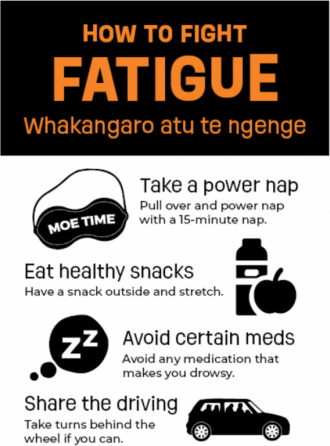 The Eastern Bay Road Safety team carried out a very successful Fatigue Stop on the Matatā Straights on New Year’s Day.
The Eastern Bay Road Safety team carried out a very successful Fatigue Stop on the Matatā Straights on New Year’s Day.
The stop, overseen by Matatā Blue Light, Police and the Eastern Bay Bay Road Safety Programme, targeted drivers returning home after the Rhythm and Vines Festival in Gisborne.
Over 1000 people called into the Fatigue Stop between midday and 2 pm, and while a significant number were breath-tested, not a single driver returned a positive result.
Fatigue stops are a chance for the Eastern Bay Road Safety Committee to directly engage with motorists to prevent fatigue-related crashes and promote road safety in our region.
People often think driver fatigue means falling asleep at the wheel. Falling asleep, however, is an extreme form of fatigue.
Fatigue is tiredness, weariness or exhaustion. You can be fatigued enough for it to impair your driving long before you nod off at the wheel. For example, when you are fatigued:
- Your reactions are slower
- Your ability to concentrate is reduced
- It takes longer to interpret and understand the traffic situation.
The most common effects of fatigue on driving are:
- Difficulty keeping your car within a lane
- Drifting off the road
- More frequent and unnecessary changes in speed
- Not reacting in time to avoid a dangerous situation.
These effects lead to a high number of single-vehicle crashes involving a car striking a tree or other rigid objects, and severe head-on collisions.
Driver fatigue is difficult to identify or recognise as contributing to a crash. It needs to be taken very seriously.